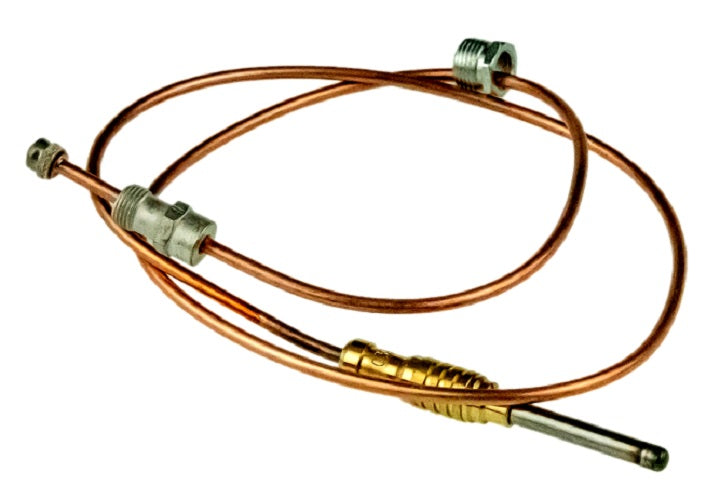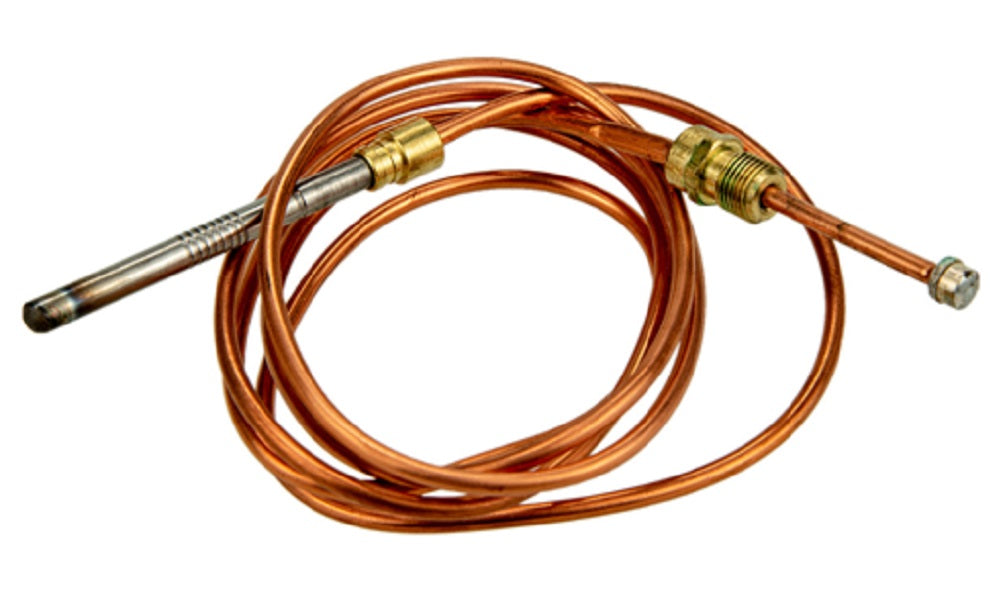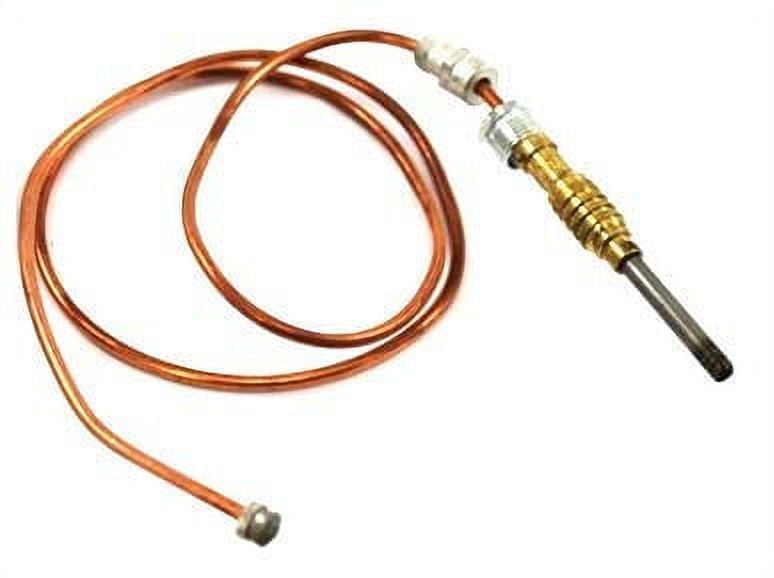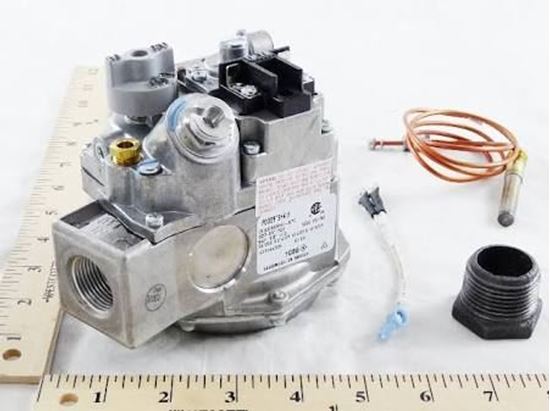Weil Mclain Boiler Thermocouple
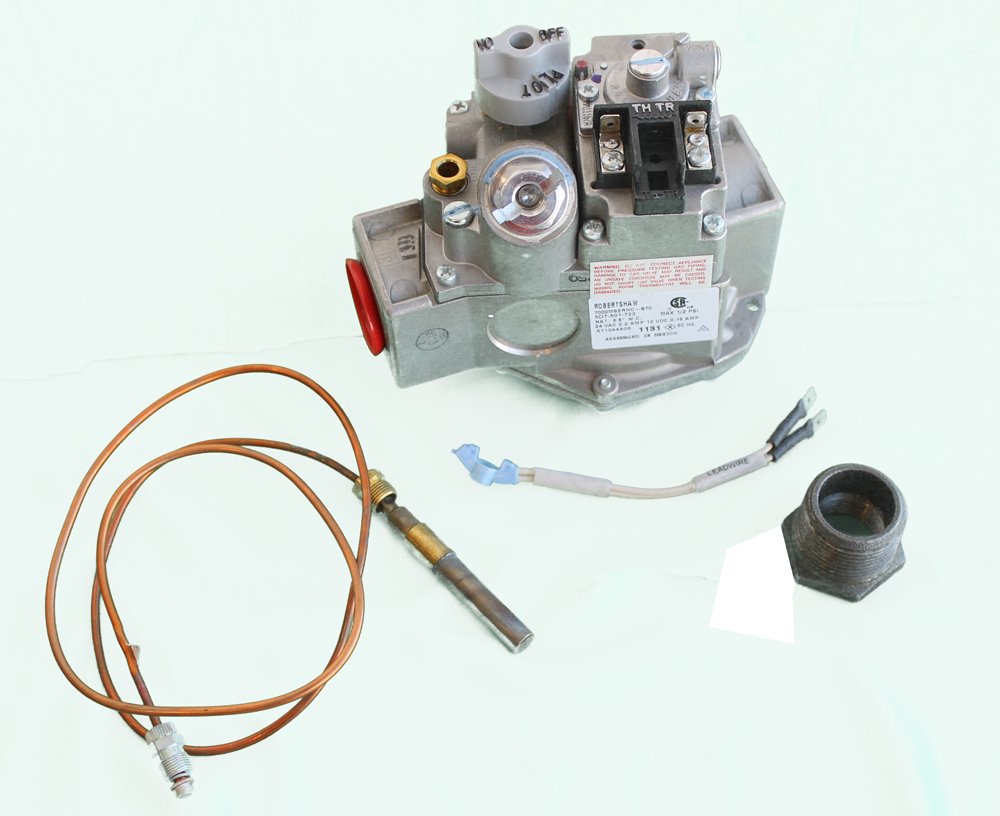
The Weil-McLain boiler thermocouple is a small but critical component responsible for ensuring safe and efficient operation of your boiler system. Understanding its function, troubleshooting common issues, and knowing when to replace it can save you time, money, and potentially prevent dangerous situations.
What is a Thermocouple and How Does it Work in a Weil-McLain Boiler?
At its core, a thermocouple is a simple thermoelectric device used to measure temperature. It consists of two dissimilar metal wires joined at one end, called the "hot junction." When the hot junction is heated (in this case, by the boiler's pilot light flame), a tiny voltage is generated due to the Seebeck effect. This voltage is directly proportional to the temperature difference between the hot junction and the "cold junction" (the other end of the wires, connected to the gas valve).
In a Weil-McLain boiler, the thermocouple's hot junction sits directly in the pilot light flame. The small voltage generated signals the gas valve to remain open, allowing gas to flow to the main burner. If the pilot light goes out, the hot junction cools, the voltage drops below a certain threshold, and the gas valve closes, preventing unburnt gas from accumulating and potentially causing an explosion. This is a crucial safety feature.
Think of it like a safety switch. The pilot light provides the "go" signal through the thermocouple. Without that signal, the main gas supply is shut down.
Key Functions of the Thermocouple:
- Flame Detection: Continuously monitors the presence of the pilot light flame.
- Gas Valve Control: Signals the gas valve to open and remain open while the pilot is lit.
- Safety Shut-Off: Automatically shuts off the gas supply if the pilot light goes out.
Common Problems with Weil-McLain Boiler Thermocouples
Thermocouples are generally reliable, but they can fail over time due to several factors. Recognizing the symptoms of a faulty thermocouple can help you diagnose the problem quickly.
- Pilot Light Won't Stay Lit: This is the most common symptom. The pilot light ignites but goes out after a few seconds or minutes when you release the pilot button.
- Boiler Shuts Down Frequently: The boiler may fire up and then shut down intermittently, especially if the pilot light is flickering.
- Weak Pilot Flame: A weak or yellow pilot flame may not generate enough heat to produce sufficient voltage for the thermocouple to function correctly.
- Visible Damage: Inspect the thermocouple for physical damage, such as cracks, corrosion, or loose connections.
Causes of Thermocouple Failure:
- Carbon Buildup: Soot and carbon deposits can accumulate on the thermocouple, insulating it from the flame and reducing its efficiency.
- Corrosion: Exposure to moisture and combustion byproducts can corrode the thermocouple wires, increasing resistance and reducing voltage output.
- Burnout: Over time, the constant heating and cooling cycles can cause the thermocouple wires to degrade and eventually burn out.
- Loose Connections: Loose or corroded connections between the thermocouple and the gas valve can disrupt the flow of voltage.
- Gas Valve Issues: While less common, a faulty gas valve can sometimes mimic thermocouple problems.
Troubleshooting a Weil-McLain Boiler Thermocouple
Before replacing the thermocouple, it's essential to troubleshoot the problem to ensure that the thermocouple is indeed the culprit. Here's a step-by-step approach:
- Safety First: Turn off the gas supply to the boiler and allow it to cool down completely.
- Visual Inspection: Carefully inspect the thermocouple for any signs of damage, corrosion, or carbon buildup. Clean the thermocouple with fine steel wool or a wire brush to remove any deposits.
- Check Connections: Ensure that the thermocouple is securely connected to the gas valve. Tighten any loose connections.
- Pilot Light Adjustment: Verify that the pilot light flame is properly adjusted. It should be a strong, blue flame that engulfs the thermocouple's hot junction. Refer to your boiler's manual for instructions on adjusting the pilot light.
- Voltage Test (Advanced): Using a multimeter, measure the voltage output of the thermocouple while the pilot light is lit. A healthy thermocouple should typically produce a voltage between 25-30 millivolts. If the voltage is significantly lower, the thermocouple is likely faulty. Note: This step requires experience with electrical testing and should only be performed by qualified technicians.
- Clean the Pilot Orifice: A partially blocked pilot orifice can result in a weak flame, causing thermocouple failure. Use a small wire or needle to carefully clean the orifice.
Important Safety Note: If you smell gas at any time during the troubleshooting process, immediately turn off the gas supply and contact a qualified HVAC technician or your local gas company.
Replacing a Weil-McLain Boiler Thermocouple
If troubleshooting indicates that the thermocouple is faulty, replacing it is a relatively straightforward process. However, it's crucial to follow the proper procedures to ensure safety and proper operation.
- Turn Off the Gas: Shut off the gas supply to the boiler at the gas shut-off valve.
- Disconnect the Old Thermocouple: Carefully disconnect the thermocouple from the gas valve. Note the orientation of the connections for proper reassembly.
- Remove the Old Thermocouple: Unscrew the thermocouple from its mounting bracket.
- Install the New Thermocouple: Screw the new thermocouple into the mounting bracket and connect it to the gas valve, ensuring that the connections are secure.
- Turn On the Gas: Slowly turn on the gas supply to the boiler and check for gas leaks using a soap and water solution. Bubbles indicate a leak.
- Relight the Pilot: Follow the manufacturer's instructions for relighting the pilot light.
- Test the Boiler: Observe the boiler for proper operation. Ensure that the pilot light stays lit and that the main burner ignites and operates smoothly.
Choosing the Right Replacement Thermocouple:
When replacing a thermocouple, it's essential to use the correct replacement part. Weil-McLain boilers often require specific thermocouple models. Consult your boiler's manual or contact a Weil-McLain dealer to ensure that you purchase the appropriate thermocouple for your unit. Using the wrong thermocouple can lead to improper operation and safety hazards.
Cost of a Weil-McLain Boiler Thermocouple and Installation
The cost of a Weil-McLain boiler thermocouple typically ranges from $15 to $40, depending on the model and supplier. Professional installation can add another $50 to $150, depending on the complexity of the job and the technician's hourly rate. Factors affecting installation cost include accessibility of the boiler and time taken for diagnosis.
DIY vs. Professional Installation:
While replacing a thermocouple is a relatively simple task, it involves working with gas, which can be dangerous if not handled properly. If you are not comfortable working with gas or have any doubts about your ability to perform the replacement safely, it's best to hire a qualified HVAC technician. A professional technician can not only replace the thermocouple but also diagnose any other potential problems with your boiler system.
Preventive Maintenance for Your Weil-McLain Boiler
Regular maintenance can help extend the life of your Weil-McLain boiler and prevent thermocouple failures. Consider these preventative measures:
- Annual Boiler Inspection: Schedule an annual inspection by a qualified HVAC technician. The technician can inspect the thermocouple, clean the burner assembly, and check for any other potential problems.
- Clean the Burner Assembly: Periodically clean the burner assembly to remove soot and carbon deposits.
- Monitor Pilot Light: Regularly check the pilot light flame to ensure that it is strong and blue.
- Check Venting: Ensure proper ventilation to prevent corrosion from combustion byproducts.
Alternatives to Traditional Thermocouples
While thermocouples are the traditional method for flame detection in boilers, some newer models use flame sensors, also known as flame rods. Flame sensors use a different principle to detect the presence of a flame, relying on the electrical conductivity of the flame itself. While offering some advantages in terms of sensitivity and reliability, flame sensors are typically found in more modern and higher-efficiency boiler systems. These are not usually a direct replacement for a thermocouple.
Conclusion
The Weil-McLain boiler thermocouple is an essential safety component that ensures the safe and efficient operation of your heating system. By understanding its function, recognizing common problems, and performing basic troubleshooting, you can keep your boiler running smoothly and prevent potentially dangerous situations. Remember, when in doubt, always consult with a qualified HVAC technician to ensure proper and safe operation of your boiler system.
